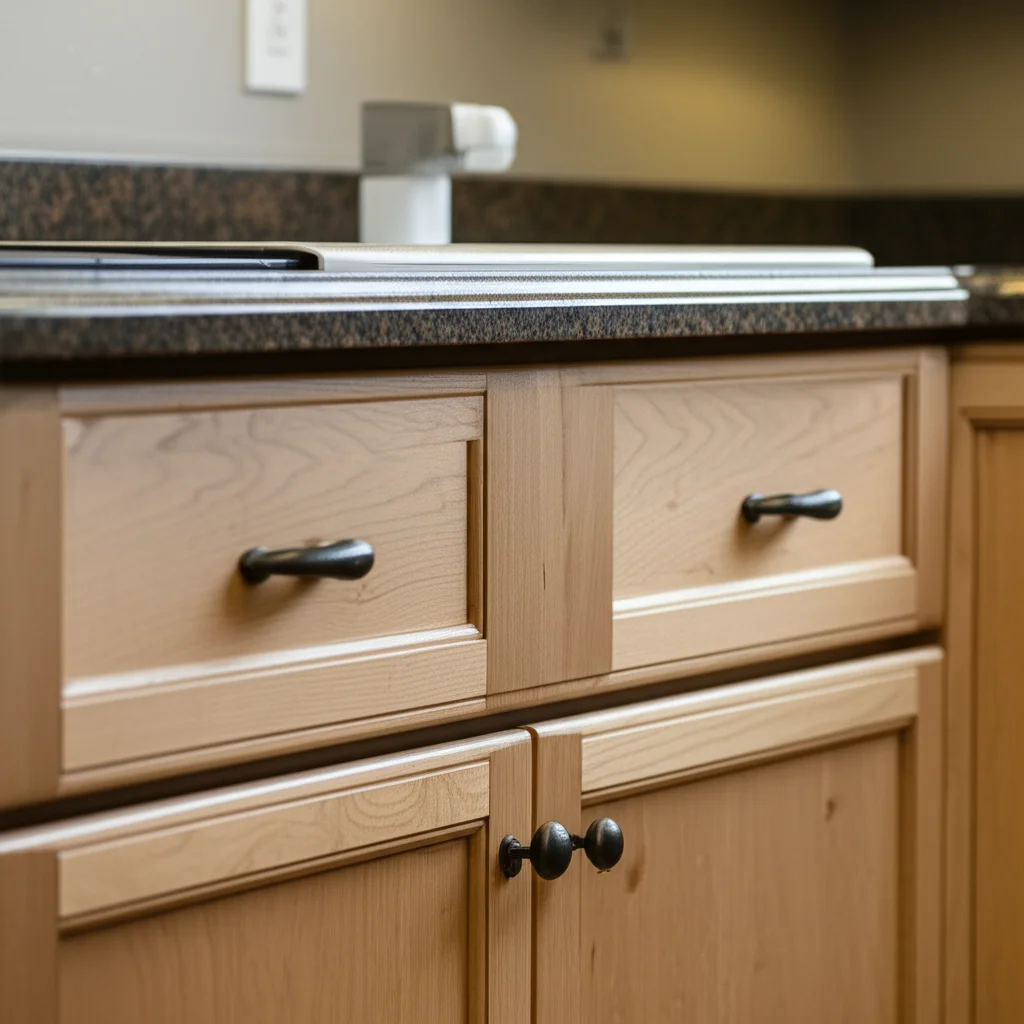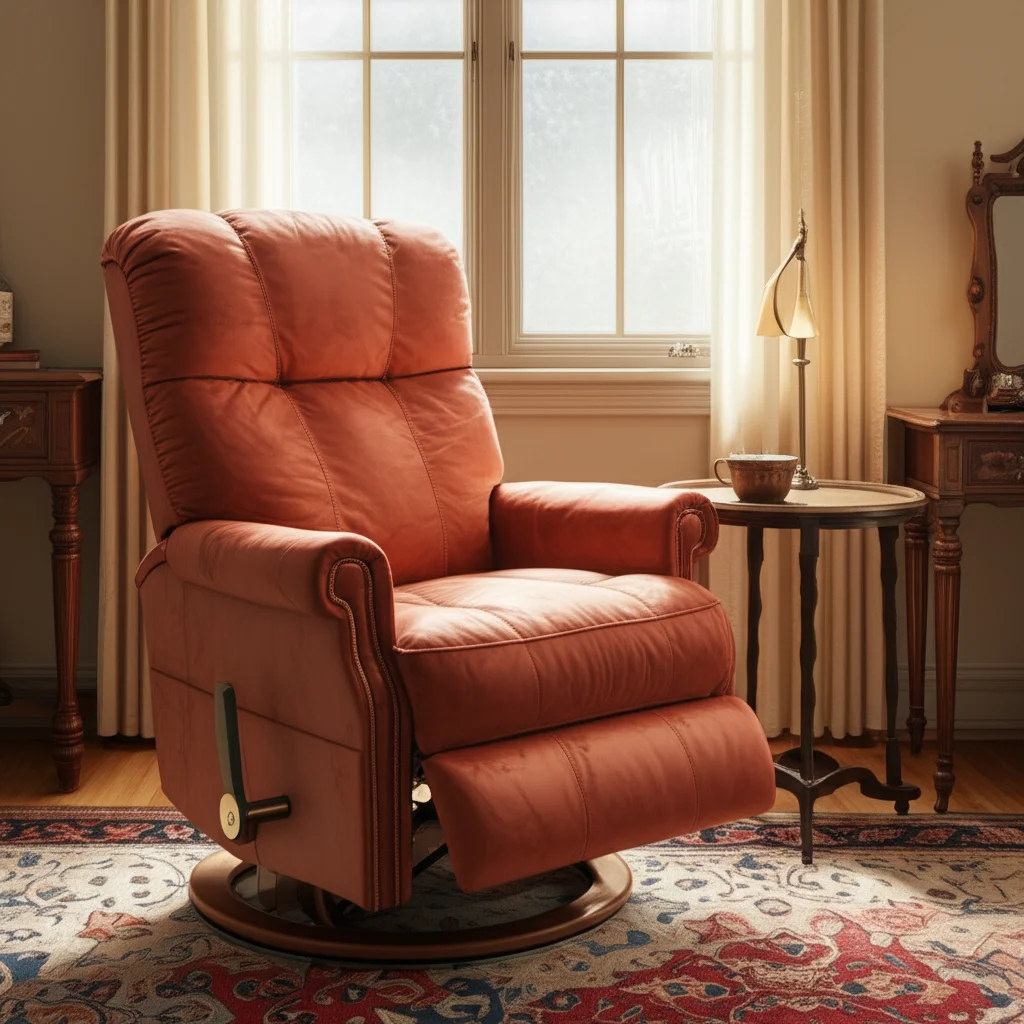· Todd Martin · Home Repair · 20 min read
How To Fix Metal Bed Frame Support

Fix Your Metal Bed Frame Support for Better Sleep
A wobbly or noisy bed frame can turn your peaceful night’s sleep into a restless experience. You might hear creaks with every turn. Perhaps your mattress feels like it’s sinking in the middle. These are common signs of failing bed frame support. Fixing these issues is important. It ensures your bed remains a stable, comfortable place. It also extends the life of your mattress. This guide will walk you through how to fix metal bed frame support problems. You will learn simple, effective steps. We cover everything from identifying common issues to applying practical repairs. Let’s make your bed sturdy again.
Takeaway
- Identify Issues: Check for loose bolts, bent rails, or damaged center supports.
- Gather Tools: Collect wrenches, screwdrivers, a rubber mallet, and replacement parts.
- Tighten Connections: Secure all nuts and bolts on the frame.
- Reinforce Sagging Areas: Add new center legs or support beams.
- Lubricate Noisy Joints: Apply wax or silicone spray to quiet squeaks.
Fixing metal bed frame support involves tightening loose connections, reinforcing weak points with additional components, and addressing specific damage like bent rails or broken welds. Regular inspection and simple tools can restore stability. This process improves sleep quality and extends the life of your mattress.
Identifying Common Metal Bed Frame Support Issues
Before you fix anything, you need to know what is wrong. Metal bed frames can show several common signs of needing repair. Recognizing these signs helps you address the problem directly. It also prevents further damage. I always start with a thorough check.
The first sign is often a squeaking noise. This sound usually happens when you move on the bed. It suggests metal parts are rubbing against each other. This rubbing can be from loose bolts or joints. The noise might seem minor at first. However, it can grow louder and more annoying over time.
Another clear sign is instability. Your bed might wobble when you get in or out. It could feel unstable during sleep. This wobbling points to loose connections or weakened structural parts. A stable bed frame is important for safety and comfort. A wobbly frame means its support system is failing.
You may also notice sagging. This sagging typically happens in the middle of the mattress. It indicates that the center support is failing. Many metal bed frames rely on central legs or beams. These parts help distribute weight evenly. If they bend, break, or simply do not provide enough support, your mattress will sag. This can lead to back pain.
Visual damage is another key indicator. Look for bent metal rails. Check for cracked welds. See if any support legs are broken or missing. Sometimes, the bed frame rails connect using hooks that fit into slots. These hooks can bend or break over time. This makes the connection weak. Addressing these issues early can save you money. You can prevent buying a new bed.
Essential Tools and Materials for Repair
Having the right tools makes any repair job easier. Fixing metal bed frame support is no different. Before you begin, gather everything you need. This preparation saves time. It also helps you complete the repair safely and effectively.
First, you will need a set of wrenches. An adjustable wrench is often enough. A socket wrench set is even better. These tools help you tighten or loosen bolts and nuts. Many metal bed frames use standard hex nuts. Having the right size wrench ensures a secure grip. This prevents stripping the fasteners.
Next, get a screwdriver. Many bed frames use screws to attach components. A Philips head or flathead screwdriver might be necessary. Some frames also use Allen keys for assembly. Check your bed frame’s specific fastener types. If you still have the assembly instructions, they will list the required tools.
A rubber mallet is very useful. You can use it to gently tap bent components back into place. It helps seat parts without damaging the metal finish. A hammer can work, but a rubber mallet is less likely to dent or scratch the frame. This tool is especially helpful for minor adjustments.
Consider having a level on hand. A level helps ensure that any added support is even. This prevents new stability issues. You want your bed to be perfectly flat. This maintains proper mattress support.
For reinforcement, you might need extra materials. These include new support legs. You might also need metal braces. Some people use wooden planks for additional center support. Bolts, nuts, and washers might also be necessary. Make sure these materials are strong enough for the weight of your mattress and sleepers. Consider heavy-duty options for long-term solutions.
Finally, a penetrating oil or silicone spray can be helpful. These products lubricate metal joints. They reduce friction. This helps eliminate squeaks. A clean rag for wiping excess oil is also good to have. Always have safety glasses. Wearing gloves is also a good idea. This protects your hands from sharp edges or lubricants.
Tightening Loose Connections and Bolts
One of the most common reasons a metal bed frame loses stability is loose connections. Over time, bolts and screws can loosen. This happens from everyday use and movement. Tightening these fasteners is often the first and simplest step to fix metal bed frame support. It can make a big difference in stability and noise.
Start by removing your mattress and box spring, if you have one. This gives you full access to the bed frame. Lay them aside safely. Now, you can clearly see all the parts of the frame. This allows for a complete inspection.
Examine every connection point. Look for bolts, nuts, and screws. Pay special attention to the corners. Check where the side rails meet the headboard and footboard. Also, look at any center support legs. These are common areas for fasteners to loosen.
Use the appropriate wrench, screwdriver, or Allen key to tighten each fastener. Turn them clockwise until they are snug. Do not overtighten them. Overtightening can strip the threads or damage the frame. A firm, secure fit is what you want. You should feel resistance when the fastener is tight.
As you tighten, listen for any changes in the frame’s movement. You might notice the wobble decreasing. The frame should feel more rigid. Sometimes, tightening one bolt can affect the alignment of another. It is good to go over all fasteners a second time. This ensures everything is uniformly tightened.
If you find any missing nuts or bolts, replace them immediately. Take one of the existing fasteners to a hardware store. Match the size and thread type. Using the correct replacement part is crucial for maintaining the frame’s integrity. Sometimes, adding lock washers can help prevent bolts from loosening again. These washers create tension, keeping the nut or bolt from backing out. After tightening everything, your bed frame should feel much more solid.
Addressing Bent or Damaged Frame Components
Sometimes, tightening bolts is not enough. Metal bed frames can suffer from bent rails or damaged components. This damage can come from heavy loads, sudden impacts, or even just age. When you need to fix metal bed frame support that is visibly bent, you have a few options. These range from straightening to reinforcement or even replacement.
First, identify the bent parts. Are the side rails bowing? Is a center support leg buckling? Once you pinpoint the damaged area, assess the severity. Minor bends might be fixable at home. Major damage could require more advanced methods.
For minor bends, you might be able to straighten the metal. A rubber mallet can work for gentle reshaping. Place a block of wood on one side of the bent metal. Gently tap the other side with the mallet. This helps distribute the force. Be careful not to apply too much pressure. Metal can snap if bent too sharply or too many times. This process aims to restore the rail’s original shape.
If a part is severely bent or cracked, straightening might not be safe. The metal could be weakened. In such cases, reinforcement is a better solution. You can add metal plates or angle iron along the damaged section. Bolt these reinforcement pieces securely to the existing frame. This adds strength. It prevents the damaged area from bending further. Ensure the added pieces are strong. They must be able to bear weight.
For broken welds, a professional welder might be necessary. Welding provides a strong, permanent fix. Do not attempt welding if you lack the proper equipment or expertise. A bad weld can be dangerous. It could fail under pressure. Alternatively, you can use strong metal brackets and bolts to bridge a broken weld. This offers a sturdy, albeit not seamless, repair.
In some situations, replacing a damaged component is the best course. If a specific leg or rail is beyond repair, check if the manufacturer offers replacement parts. If not, a local metal fabricator might be able to create a custom piece. This ensures your bed frame regains its full structural integrity. Remember, a strong frame supports your mattress and your sleep.
Reinforcing Center Support for Metal Bed Frames
A common weak point in many metal bed frames is the center support. This is especially true for larger beds like queen or king sizes. Without adequate center support, your mattress will sag. This can cause discomfort. It also shortens the life of your mattress. Learning how to reinforce this area is key to long-term bed stability. Many people seek to add support to bed frame for this reason.
The goal of center support is to distribute the weight of the mattress and sleepers evenly. This prevents the middle of the frame from bowing down. Many metal frames come with adjustable center legs. These legs often run from a central beam to the floor. Inspect these legs first. Make sure they are not bent, broken, or simply missing. If they are adjustable, ensure they are extended fully. They must touch the floor firmly.
If your frame lacks sufficient center support, you can add it. One popular method is to install additional adjustable legs. These legs are widely available at hardware stores. They come with a flat plate at the top. This plate attaches to the bed frame’s center rail. The leg extends down to the floor. Make sure to buy legs rated for furniture weight. Install these legs evenly spaced along the center beam. This spreads the load across more points. This helps to make a metal bed frame more stable.
Another effective solution is to build or buy a new central support beam. This beam runs perpendicular to the main side rails. It sits under the bed’s slats or mattress foundation. For metal frames, you can find metal support beams designed for this purpose. They often come with pre-drilled holes for attaching legs. You might also consider creating a sturdy wooden center support for bed frame if your frame allows for it. This can involve cutting a strong piece of lumber to fit across the width of the frame and adding legs to it. This wood support can then rest on the existing side rails or be attached with brackets.
For a comprehensive fix, consider both a central beam and additional legs. This provides maximum support. Ensure any new supports are level with each other. This prevents uneven pressure on your mattress. A well-supported center keeps your mattress flat. This provides comfortable sleep. It also protects your investment in a good mattress. If you want to know more about this topic, you can read our guide on how to make center support for bed frame.
Fixing Squeaks and Noises in Metal Bed Frames
A squeaky metal bed frame can be incredibly annoying. It disrupts sleep and peace. Squeaks usually come from metal parts rubbing against each other. Friction creates the noise. Learning how to quiet these sounds is an important part of how to fix metal bed frame support. It makes your bed quiet and comfortable. If you want to delve deeper into fixing the noise, refer to our article on how to fix squeaky metal bed frame.
The first step to fix squeaks is to identify the source. Lie on your bed and have someone gently push on different areas. Listen for where the squeak originates. It might be a joint, a leg, or where the slats rest on the frame. Pinpointing the exact spot saves time.
Once you find the squeaky area, apply lubrication. Silicone spray is an excellent choice for metal. It reduces friction without leaving a greasy residue. Spray it directly onto the joint. Move the bed slightly to help the lubricant work its way in. Petroleum jelly or paraffin wax can also work. Rub a generous amount onto the offending metal surfaces. The wax creates a barrier between the rubbing parts.
Sometimes, squeaks come from loose connections. Even after tightening, some movement can remain. In these cases, you can use felt pads or thin rubber shims. Place these materials between the metal components. This creates a cushion. It absorbs vibrations and stops metal-on-metal contact. For example, if a metal slat is squeaking against the frame, place a felt pad under it.
Another common squeak source is the bed frame legs rubbing on the floor. If this is the issue, add felt pads to the bottom of each leg. These pads not only stop squeaks but also protect your floors. They also make it easier to move the bed without scratching.
If your bed frame has wooden slats that rest on metal rails, these can also cause noise. The wood can rub against the metal. Wrap the metal rails with fabric tape or thin foam strips. This provides a soft buffer. It eliminates the friction that causes the squeak. Taking these steps helps ensure your bed frame stays quiet. You can then enjoy undisturbed sleep.
DIY Solutions for Added Stability and Longevity
Beyond basic repairs, you can implement several DIY solutions to improve your metal bed frame’s stability and extend its life. These ideas offer extra reinforcement. They can transform a good frame into a great one. Making your bed frame more sturdy leads to better sleep. Many people wonder how to make a bed frame more sturdy.
One simple way to add stability is by bracing the corners. Even if your frame has corner brackets, adding extra L-brackets can significantly reduce wobble. Choose sturdy metal L-brackets. Bolt them firmly to the frame where the side rails meet the headboard and footboard. This creates a more rigid connection. It prevents flexing at these high-stress points. Use bolts and nuts that go all the way through the frame for maximum strength.
Consider adding more support legs, especially for larger beds. While the center support is crucial, additional legs along the side rails can also help. These extra legs spread the weight more evenly. They reduce stress on any single point. You can find universal bed frame legs online or at hardware stores. Attach them securely to the bottom of the frame rails using clamps or bolts. This is especially helpful if your frame feels springy.
Another DIY solution involves using plywood or sturdy wooden planks. If your bed frame uses thin metal cross supports or slats, they might not offer enough flat support for your mattress. Placing a sheet of plywood over the existing supports creates a solid, even surface. Measure the inside dimensions of your frame. Cut a piece of furniture-grade plywood to fit. This plywood acts as a solid foundation. It prevents mattress sagging and offers firm support.
For frames that tend to slide on hard floors, rubber furniture cups or non-slip pads under the legs are effective. These items grip the floor. They prevent the bed from shifting. This movement can contribute to instability and noise over time. They are easy to install. They provide immediate results.
Regular maintenance is also a DIY solution for longevity. Periodically re-tighten all bolts. Inspect the frame for new signs of wear. Early detection of issues prevents them from becoming major problems. These proactive steps ensure your metal bed frame remains a stable and reliable foundation for years to come.
Upgrading Bed Frame Support for Enhanced Durability
Sometimes, fixing existing issues is not enough. You might want to upgrade your metal bed frame support for long-term durability. This involves implementing more robust solutions. These changes can make your bed frame stronger than ever. They prevent future problems.
One significant upgrade involves a heavy-duty center support system. Standard center legs might be thin or insufficient. You can replace them with thicker, stronger metal posts. Or, you can add a complete metal center beam system. These systems often include multiple legs. They spread the load across the entire middle section of the bed. Look for systems designed for commercial use. These often offer superior strength.
Consider a slat conversion kit if your metal frame uses a few flimsy metal bars as mattress support. These kits replace those bars with a series of closely spaced wooden or metal slats. Many kits include a center support beam with legs. This creates a much more supportive and breathable base for your mattress. The closer spacing of slats prevents mattress sagging between supports. It also enhances air circulation, which is good for mattress longevity.
For metal frames with hook-in side rails, the hooks can bend or break. You can reinforce these connections. Use heavy-duty steel angle brackets. Bolt these brackets to the side rails and the headboard/footboard posts. This creates a rigid connection. It reduces stress on the original hook system. This type of reinforcement is critical if you have experienced rail detachment issues. It is important to know how to fix a broken bed rail hook as part of this process.
Another durability upgrade is adding cross-bracing. If your metal frame feels wobbly from side to side, cross-bracing can help. This involves adding diagonal metal bars to the frame’s underside. These bars create a triangular structure. Triangles are the strongest geometric shape. They resist lateral movement. You can often find universal cross-brace kits. They attach with bolts and nuts. This significantly increases the frame’s torsional rigidity.
Finally, consider the overall weight capacity of your frame. If you have a very heavy mattress or multiple sleepers, ensure your frame is designed to handle the load. If not, these upgrades can bring your frame up to the required standard. Investing in these upgrades now saves you from costly repairs or replacements later.
When to Consider Professional Help or Replacement
While many metal bed frame support issues are DIY-friendly, there are times when you should consider professional help or even a full replacement. Recognizing these situations saves you time, effort, and potentially greater expense. My rule of thumb is safety first.
If your metal bed frame has extensive structural damage, professional help might be necessary. This includes widespread rust that compromises the metal’s integrity. It also includes multiple broken welds or severe bending across several major components. A local metal fabricator or welding shop might be able to repair extensive damage. They have the specialized tools and expertise. Get a quote first. Sometimes, the cost of professional repair can approach the cost of a new frame.
Another reason for professional intervention is if you lack the necessary tools or skills. Some repairs, like welding, require specific equipment and training. Attempting a repair beyond your skill level can be dangerous. It can also lead to an unstable bed. It is better to hire a professional. This ensures the job is done correctly and safely.
Consider replacement if your bed frame is very old. Metal fatigue can set in over decades. The metal might become brittle. It might lose its original strength. Even minor repairs might not hold for long. An old frame might have multiple weak points. Fixing one issue could just highlight another. At some point, the frame reaches the end of its functional life.
If your bed frame repeatedly develops the same issues, it might be a design flaw. For example, if center supports keep bending, the original design might be inadequate for your mattress weight. In such cases, repeated repairs are frustrating. A new frame designed for greater weight capacity might be a better investment.
Finally, prioritize safety. If you feel your bed frame is unsafe, replace it. A collapsing bed frame can cause injury. It can also damage your mattress. Do not risk your well-being on a dangerously unstable frame. A new, robust bed frame provides peace of mind and better sleep.
Frequently Asked Questions
What causes metal bed frames to become unstable?
Metal bed frames commonly lose stability due to loose bolts and nuts. Daily movement and use can loosen these fasteners over time. Poorly designed or inadequate center support is another major cause. Bent or broken metal components from excessive weight or impacts also lead to instability.
How often should I check my metal bed frame for support issues?
You should inspect your metal bed frame for support issues at least every six months. This regular check allows you to catch loose bolts or minor damage early. Addressing small problems quickly prevents them from becoming major repairs. It also extends the overall life of your bed frame.
Can I reinforce a metal bed frame with wood?
Yes, you can reinforce a metal bed frame with wood. Many people use sturdy wooden planks or plywood sheets as additional mattress support. You can also build a wooden center support beam with legs. This provides extra stability and distributes weight effectively, especially for larger mattresses.
Is it normal for a new metal bed frame to squeak?
A new metal bed frame should not typically squeak. If it does, the most likely cause is loose assembly. Check all bolts and connections. Ensure they are tightened properly according to the instructions. Sometimes, specific joints might need a little lubrication right from the start to prevent early squeaks.
How can I make my metal bed frame quiet without professional help?
To make your metal bed frame quiet, first tighten all nuts and bolts. Then, apply a silicone spray or paraffin wax to any squeaky metal-on-metal contact points. You can also place felt pads or thin rubber shims between rubbing parts. Adding felt pads under the legs can also eliminate floor squeaks.
What is the best way to prevent future bed frame support problems?
Prevent future bed frame support problems through regular maintenance. Periodically re-tighten all fasteners. Avoid exceeding the bed frame’s weight limit. Consider adding extra center support from the start, especially for larger beds. Keep the area around the bed clear to prevent accidental impacts.
Conclusion
A stable, quiet bed frame is essential for restful sleep and the longevity of your mattress. Knowing how to fix metal bed frame support issues allows you to maintain this crucial piece of furniture. We covered identifying common problems like squeaks and wobbles. We discussed essential tools and materials. You learned how to tighten loose connections effectively. We also explored solutions for bent components. Adding reinforcement for center support is vital. Quieting annoying squeaks is also important.
You now have a clear guide. You can tackle most bed frame repairs yourself. These DIY fixes save money. They also give you a sense of accomplishment. Remember, a little maintenance goes a long way. Regularly check your bed frame. Address small issues before they grow. If you face extensive damage, consider professional help. A strong bed frame provides a secure foundation. It ensures you wake up refreshed. Take action today to make your bed the supportive sanctuary you deserve.





